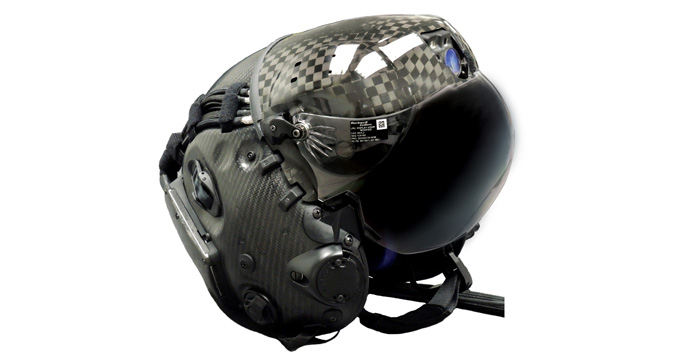Futuristic F-35 fighter-pilot helmet technology hails new era in aerial warfare
State-of-the-art tech allows pilots to 'see through' plane and receive mission data before their eyes.
Lockheed Martin's new F-35 Lightning II fighter jet is being hailed as the world's most advanced tactical aircraft and a new technological era for aerial warfare. It's been 15-years in the making, each cost nearly $90 million, and after being plagued with setbacks has recently been declared ready for combat. While the plane itself is something to marvel, the helmets its pilots wear are also taking things to the next-generation.
Inside the cockpit of the advanced F-35A Lightning II, pilots will be stepping into the future as they literally plug themselves into the plane through a revolutionary new helmet that lets them sense everything that's going on during missions, projecting information on to a display in front of their eyes.
Designed by avionics and electronics experts at Rockwell Collins, the state-of-the-art F-35 Gen III Helmet Mounted Display System provides pilots with a 360-degree view around the plane's exterior by projecting live video feeds from the external cameras on to the helmet's lens. This technology, called Distributed Aperture System, or DAC, is a revolutionary step for the modern-day fighter pilot and will replace a traditional heads-up display screen in cockpits for the first time in 50 years.
In what would make the average person quickly go green with nausea, skilled pilots are able to turn their heads and 'see-through' their plane during combat in order to help see enemy planes or targets – all while flying their jet at speed. As well as useful in combat situations it will help increase safety as it allows pilots to quickly see horizons and know where the ground is during dizzying manoeuvres. Night vision is also built into the helmet, with a zoom function to improve situational awareness and eye threats or targets on the ground.

The helmets are custom built to fit each pilot's head, with each individual having to undergo a laser scanning 3D measurement procedure to ensure the fit is spot on. Any movement or wiggle from an ill-fitting helmet could severely affect a pilot's accuracy through the HMDS during potentially life-threatening situations.
The virtual heads-up display also will serve up a platter of critical information including airspeed, altitude, targeting information, video recording and picture-in-picture capability. You may ask why video recording is on the feature list; air forces aren't jumping on-board the YouTube revolution – it's to allow personnel to dissect and debrief missions and help with fighter-pilot training.
"It's absolutely where we need to go for taking the fight to the enemy, particularly in tomorrow's wars as the enemy continues to get more and more advanced. The fifth-generation aspects, the stealth and the sensor tech is going to allow us to operate in a very contested environment, to where we will have a difficult time getting there with some of the legacy platforms like the F-16," Major Jayson Rickard told Fox News, who got hands on with the next-gen equipment.



BAE Systems is also trialling its own advanced helmet, the Striker II, which also provides pilots with a sophisticated 40-degree field of view on the outside that syncs with the pilot's head movements. It also offers night vision, removing the need for pilots to wear traditional heavy night-vision technology.
Lockheed Martin is making three versions of the new, fifth-generation fighter jet. There will be the F-35A, F-35B and F-35C. The new aircraft are being coveted for enhanced computer networking systems and stealth capabilities, as well as the F-35B's ability to take-off vertically. The new planes are being snapped up by air forces from the US, Great Britain, Australia and more.
© Copyright IBTimes 2025. All rights reserved.






















